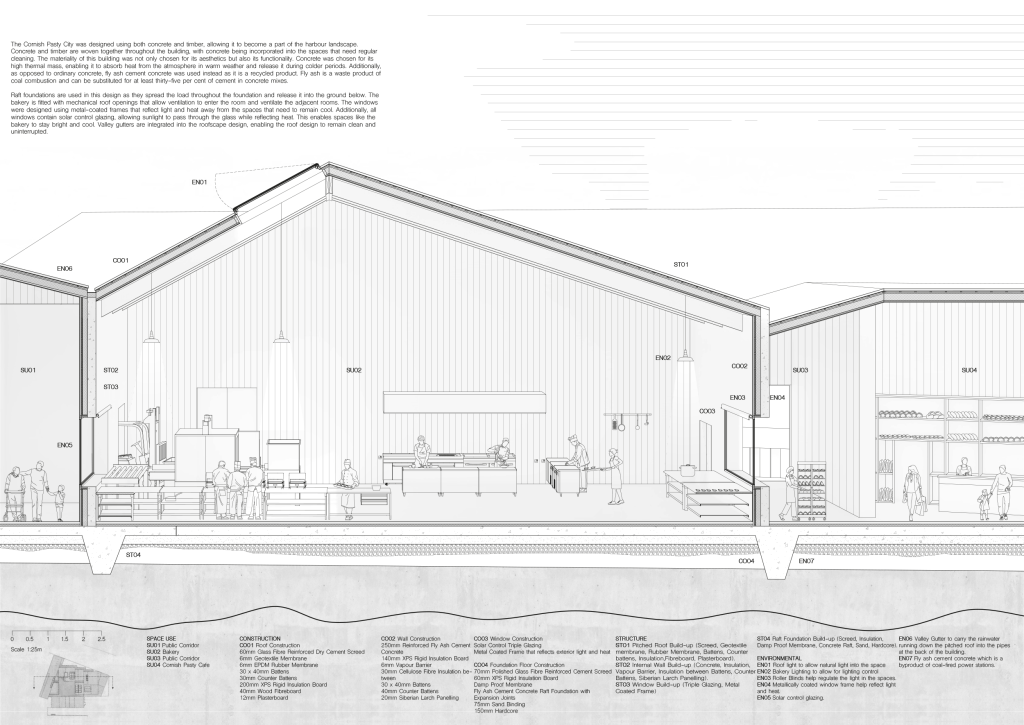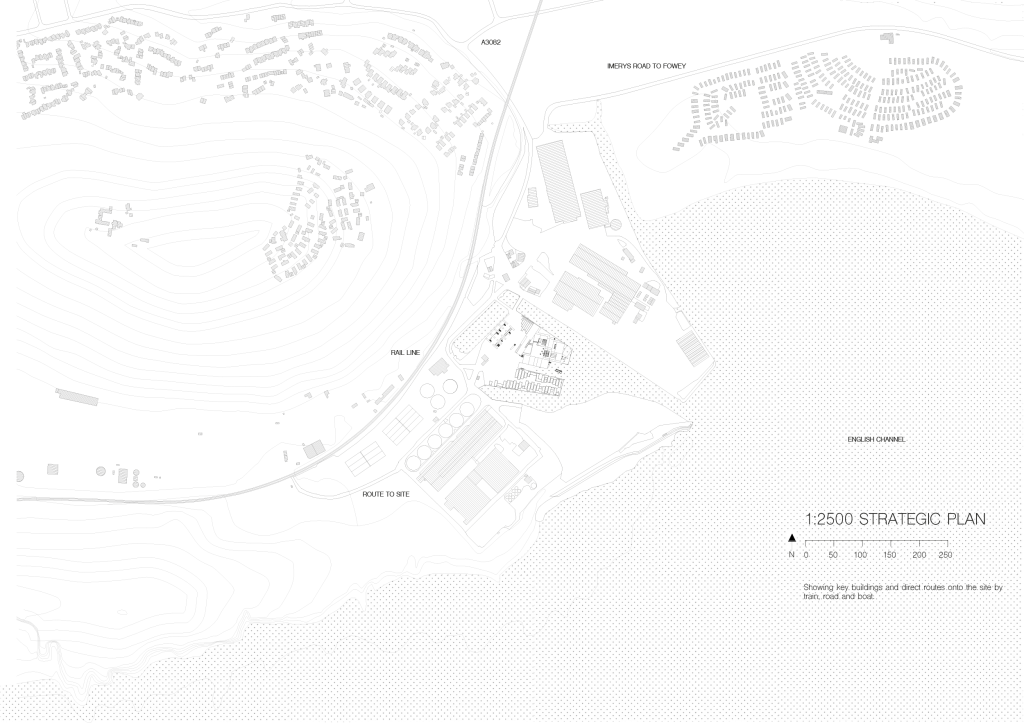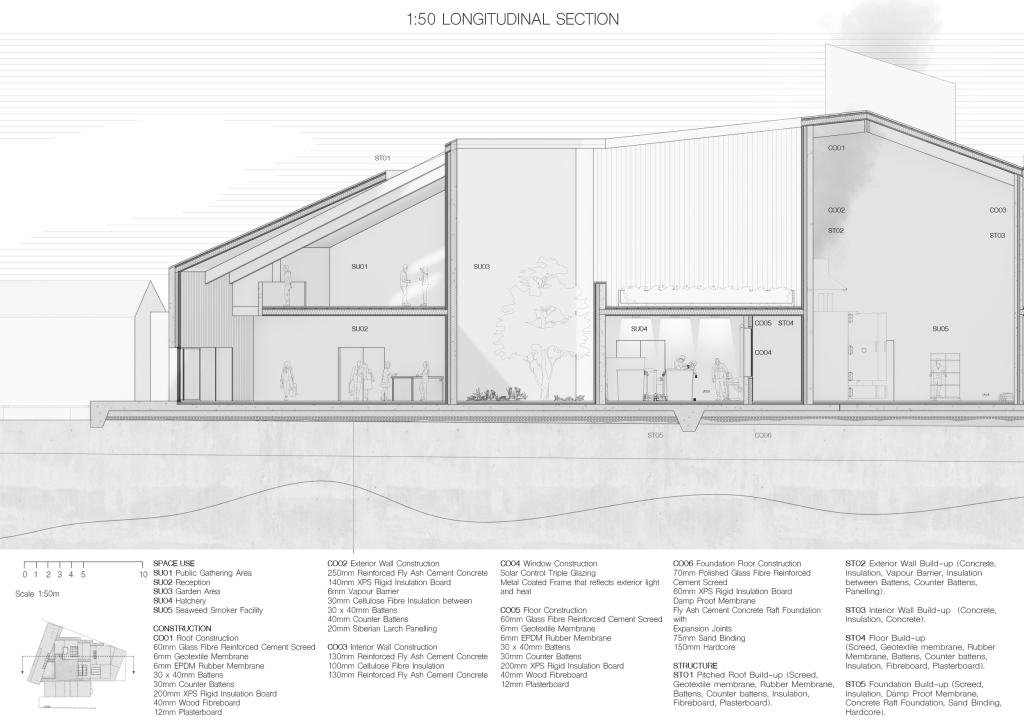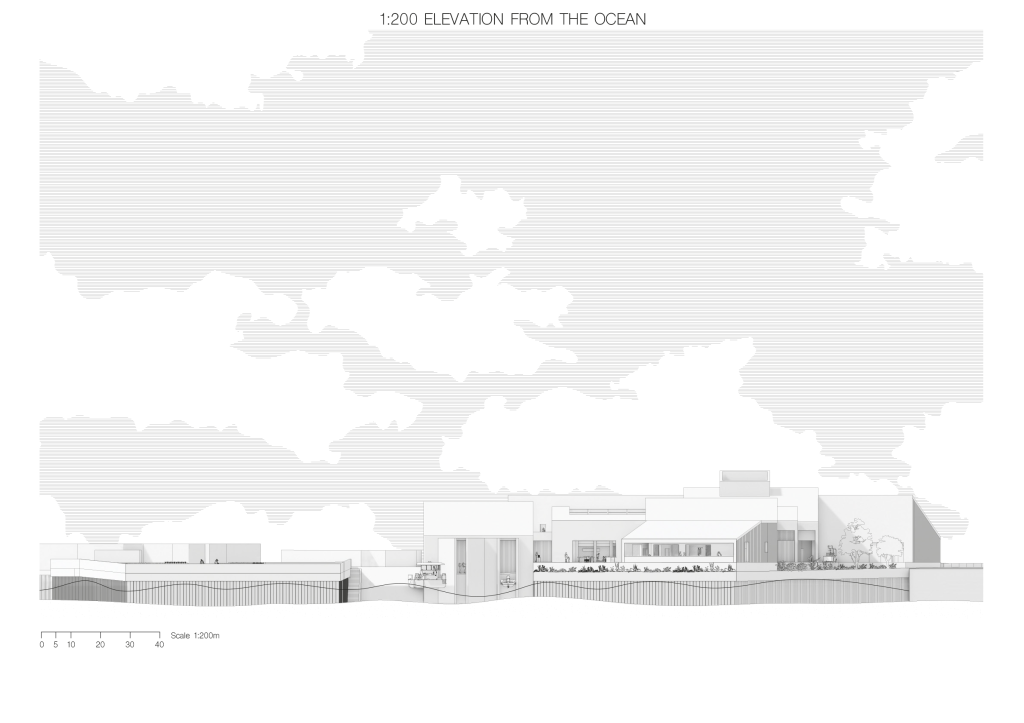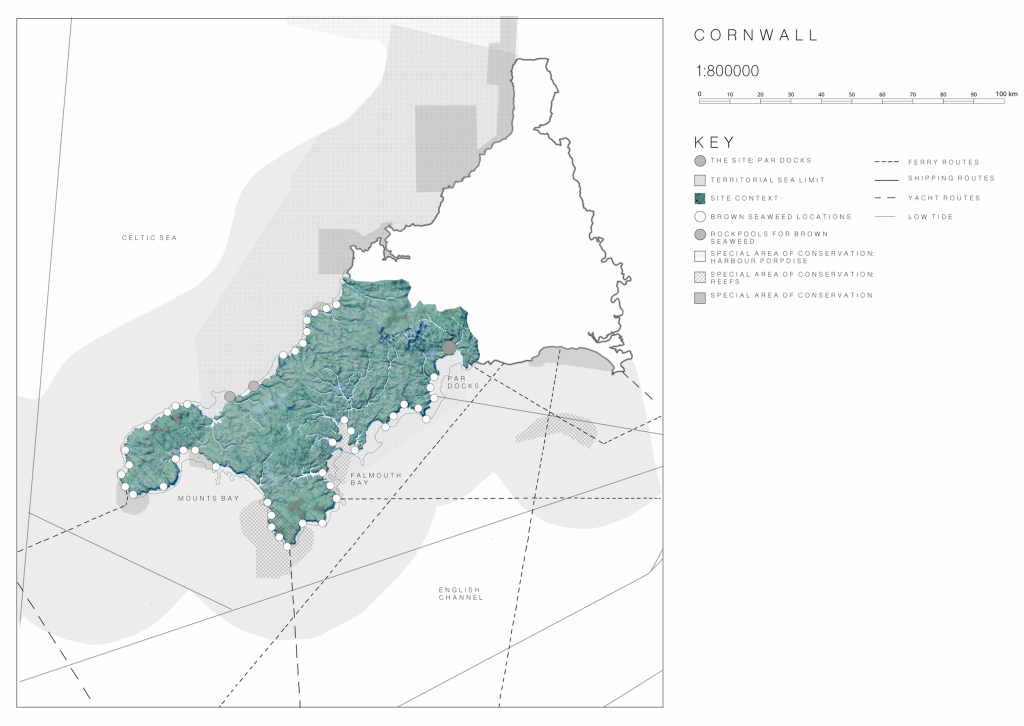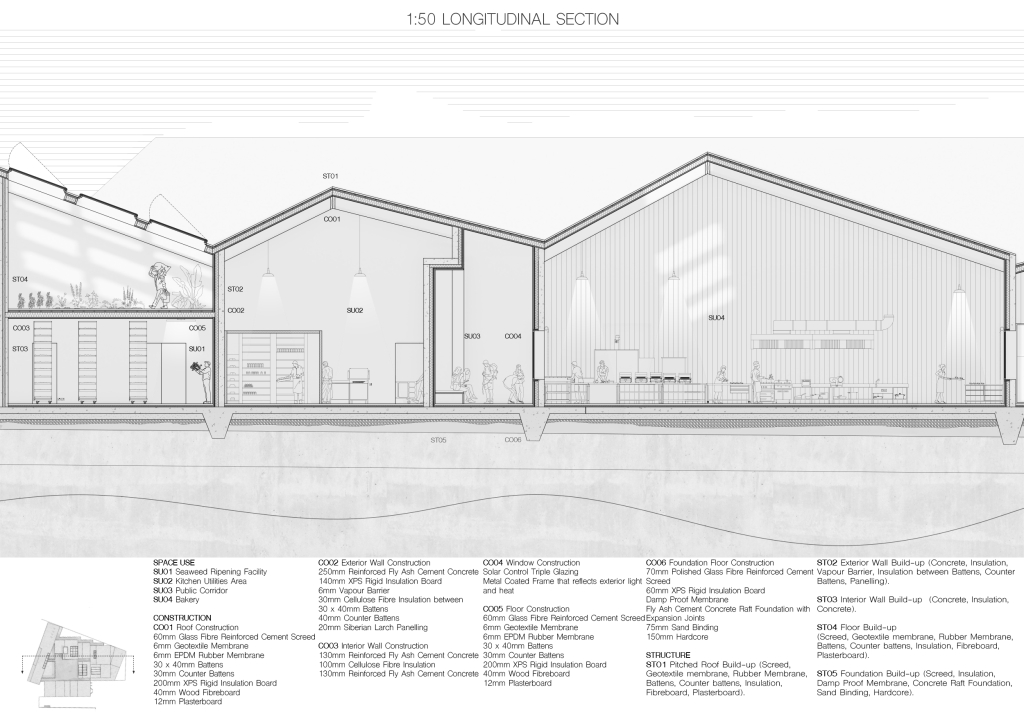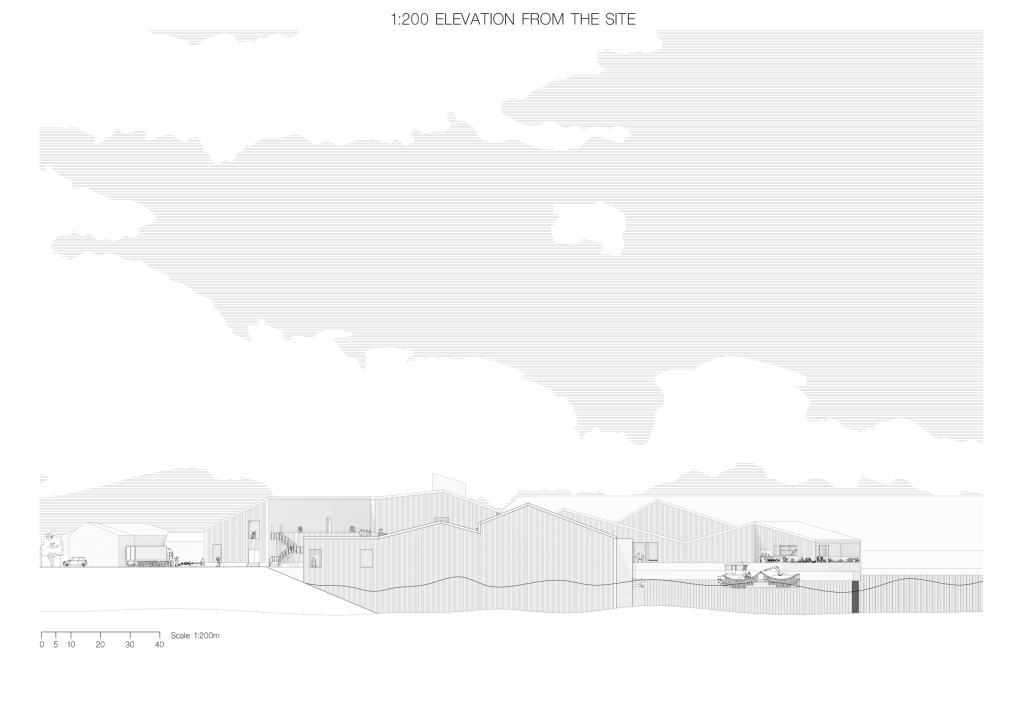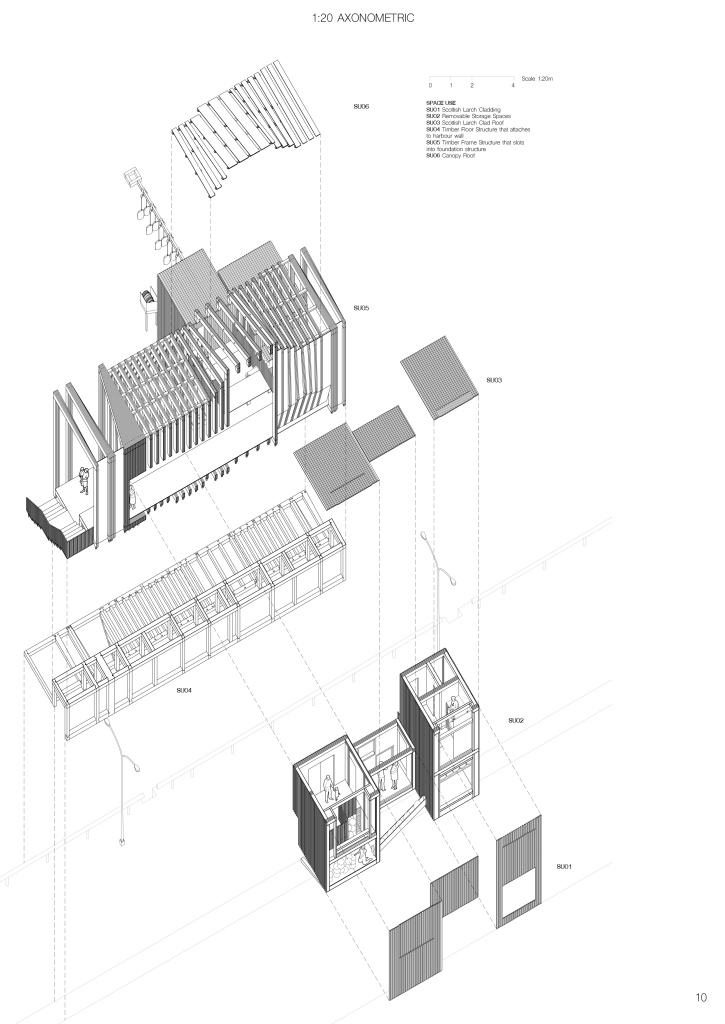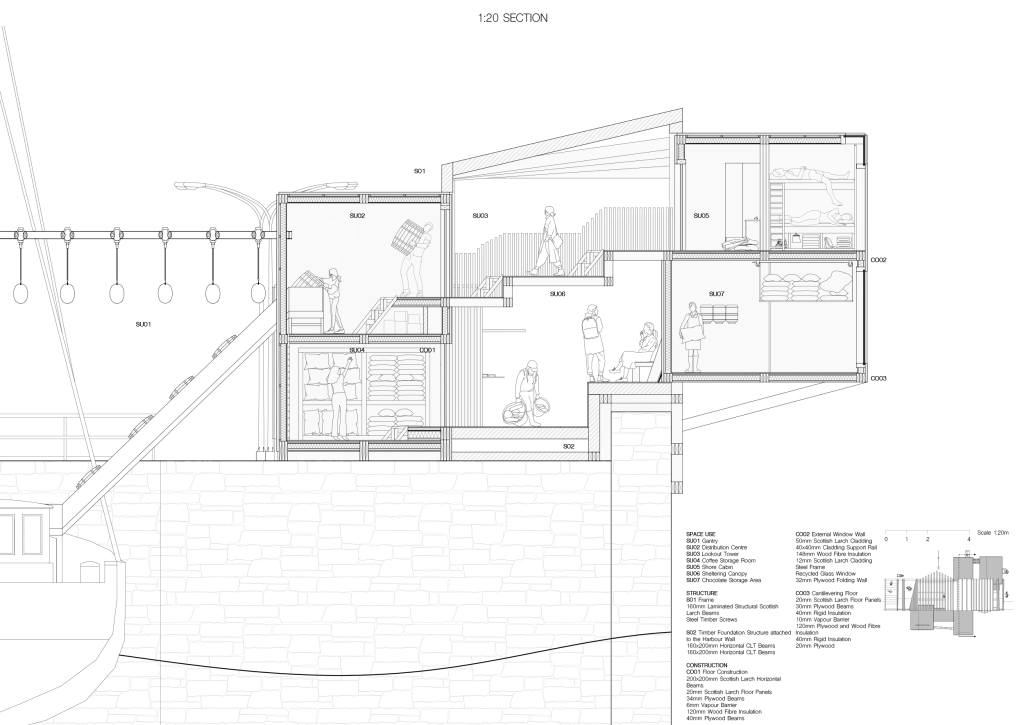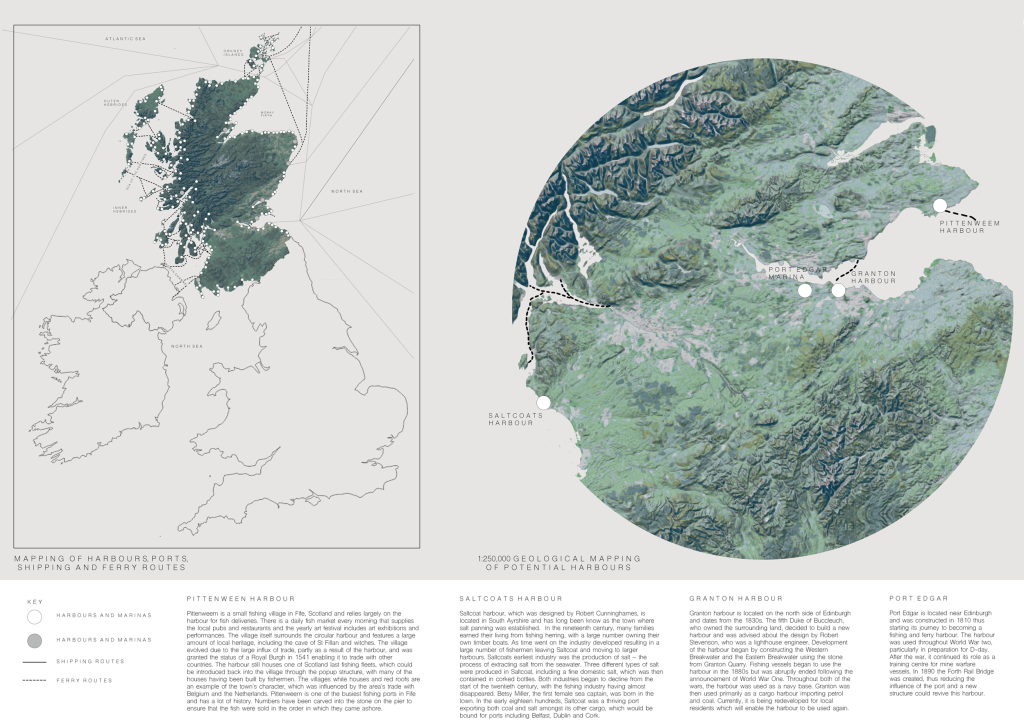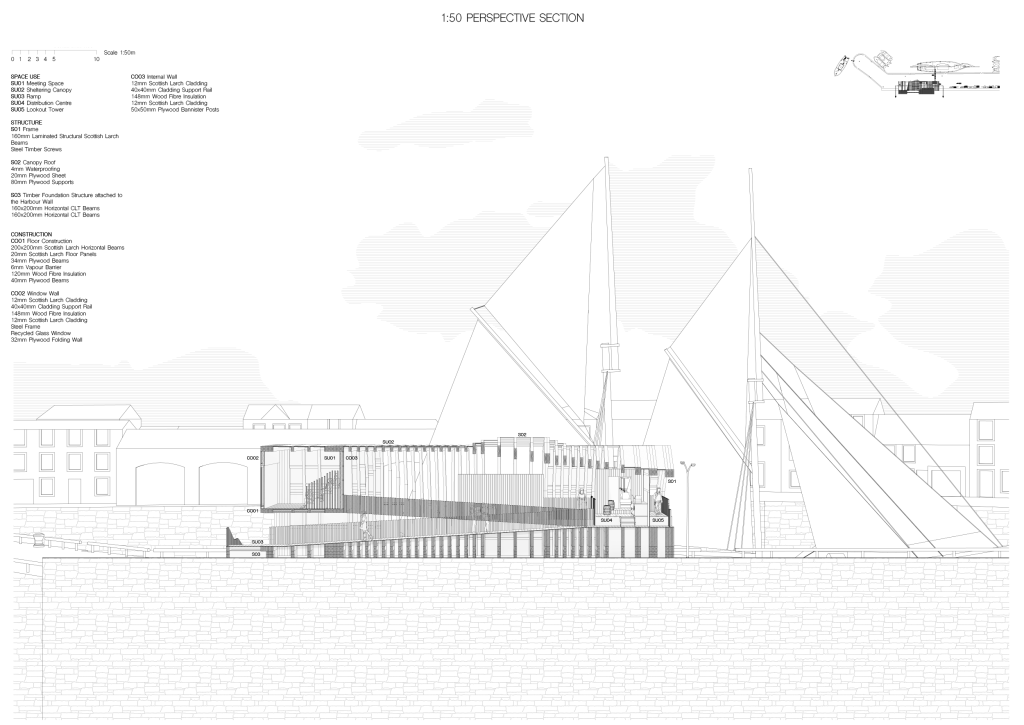Amber England
The Cornish Pasty City
Seaweed is a natural product with incredible properties that is starting to be utilised increasingly in today’s climate; with local offshore farms beginning to sprout up in Cornwall, the Par Horticultural Seaweed Centre is both a processing plant for horticultural seaweed products and a community space for locals and tourists alike. While distributing these amazing products across the country it was also important to ensure that the project also gave back to the community, with spaces for events, a beautiful garden to enjoy and tourist attractions to experience; bringing people together in Cornwall and providing a new route for income in one of the most impoverished counties in England. Each “wing” of the dock represents the two areas of both ‘production’ and ‘community,’ combining in their use and processing of seaweed.
The Cornish Pasty City is situated on Par Docks, once a thriving English China clay factory site in Cornwall, and uses seaweed sourced off the Cornish coast to create gluten-free Cornish pasties. The building itself is a cyclical process displaying to the visitor the formation of the seedlings through to the creation of the Cornish pasty, which can be enjoyed on site. The journey through the building, which encapsulates the factory vernacular present in the remaining buildings on site, follows the seaweed journey from the hatchery, deploying the seaweed ropes, drying facilities, a bakery, and any uneaten pasties can be turned into electricity in the electricity station. The building revitalises the industrial site and gives back to the community by providing an array of allotments that can be used to create vegetables and herbs vital to the Cornish pasty. One of the main priorities was sustainability, which Cornwall is keen to see implemented in all new buildings; therefore, alongside creating the building’s own electricity, areas such as the hatchery and bakery reuse waste energy from the clay factory adjacent to the site. Additionally, the materials used within the building are repurposed from several abandoned concrete storage facilities.
Email: ambengland123@gmail.com
Instagram: @aengland28
LinkedIn: www.linkedin.com/in/amber-england
The Fishing Line
Introduced in the heart of Reading Town, Hogmanay, the Scottish celebration of New Years, brings a large infusion of culture and festivity to the local area. Cock-a-Leekie soup, being an integral cuisine of the Scottish, accompanies the festivities. The influx of Hogmanay culture, introduced by the arrival of the Soup Facility, will indulge Reading in a host of traditions that seek to bring people together to celebrate the New Year and the fresh start that follows midnight. On New Year’s Eve in Reading, the public are invited to join in the activities, including; farming the ingredients for the soup, trying the soup, setting Juniper branches alight at midnight, Ceilidh dancing, drinking homemade Gin, and the chance to watch as the chefs produce the soup from raw ingredients on site.
Cock a Leekie , Scotland, Timber, Homemade, Feathers, New years
This project consisted of two parts and focused on creating a distribution point for Timbercoast, a sustainable shipping company. The brief was to create two temporary timber structures that would connect to the harbour wall and act as a distribution centre for various cargoes. The project’s first phase consisted of a “pop up” facility that could be assembled on-site and serve as a storage facility for four cargoes. The second part of the project was to design a small quayside base for Timbercoast, consisting of storage space for five cargoes, a meeting space, a recovery cabin, repair facilities, and private accommodation. The harbour chosen for the structures was Pittenweem, a small fishing village in Fife, Scotland. This active fishing village was the primary source of inspiration for the structure, creating a facility that echoed the bustle and atmosphere of a fish market. Both facilities were placed strategically on the site enabling viewers to experience the views of the village and the ocean while not detracting from the historic marks made by fishermen on the harbour. Both structures were designed using local materials and combined the geometric shapes featured in Robert Stevenson’s Lighthouses, who often visited Pittenweem, with the organic twisting form of the waves. Thus, blending the architecture into the seaside landscape.


